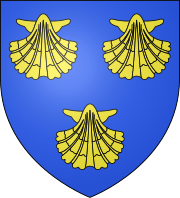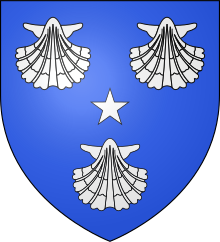
Viscount of Oxfuird is a title in the Peerage of Scotland. It was created in 1651 for Sir James Makgill, 1st Baronet, along with the subsidiary title of Lord Makgill of Cousland, also in the Peerage of Scotland, with remainder to his "heirs male of tailzie and provision whomsoever". He had already been created a Baronet, of Makgill, in the Baronetage of Nova Scotia on 19 July 1625, with remainder to heirs male whatsoever. The remainder to heirs male whatsoever was a Scottish concept that permitted inheritance by persons not descended from the original grantee, but descended in the male line from male-line ancestors of the grantee. However, on the death of the first Viscount's son, the second Viscount, the Lordship and Viscountcy were assumed by his daughter Christian, as heir of tailzie and provision. Her son Robert Maitland Makgill also voted as Viscount of Oxfuird at the election of Scottish Representative Peers in 1733.
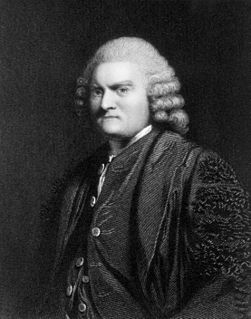
Sir John Pringle, 1st Baronet, PRS was a Scottish physician who has been called the "father of military medicine".
There have been 19 baronetcies created for persons with the surname Campbell, seven in the Baronetage of Nova Scotia and twelve in the Baronetage of the United Kingdom.

The Dalyell Baronetcy in the Baronetage of Nova Scotia was created 7 November 1685 for a Scottish General, Thomas Dalyell of the Binns. The succession of the title is unusual in that, in default of heirs male, it can pass by special remainder to tailzie succeeding him in the estate of The Binns.
There have been four baronetcies created for persons with the surname Leslie, one in the Baronetage of Nova Scotia, one in the Baronetage of Ireland, one in the Baronetage of Great Britain and one in the Baronetage of the United Kingdom. Three of the creations are extant as of 2010.
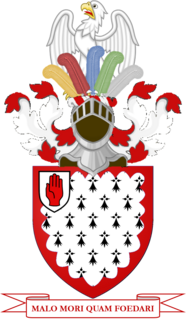
The Barnewall Baronetcy, of Crickstown Castle in the County of Meath, is a title in the Baronetage of Ireland. It was created on 21 February 1623 for Sir Patrick Barnewall. He was the member of a family that had been settled in Ireland since 1172, when Sir Michael de Berneval landed on the coast of Cork. The second and third Baronets both represented Meath in the Irish House of Commons. The fifth Baronet, a descendant of the second son the first Baronet, established his right to the title in 1744. However, his cousin Thomas Barnewall, de jure sixth Baronet, never assumed the title and it remained dormant from his death in 1790 until 1821, when it was successfully claimed by Robert Barnewall, the eighth Baronet.

There have been four baronetcies created for persons with the surname Hope, three in the Baronetage of Nova Scotia and one in the Baronetage of the United Kingdom. As of 2010 one creation is extant, one dormant and two extinct.
There have been four baronetcies created for persons with the surname Hall, one in the Baronetage of Nova Scotia and three in the Baronetage of the United Kingdom. Three of the creations are extant as of 2010.

There have been three baronetcies created for members of Clan Balfour, one in the Baronetage of Nova Scotia and two in the Baronetage of the United Kingdom. One is extant and a subsidiary title of Baron Riverdale.

There have been three baronetcies created for persons with the surname Munro, one in the Baronetage of Nova Scotia and two in the Baronetage of the United Kingdom.
Lieutenant General Sir Steuart Robert Pringle was a Scottish Royal Marines officer who served as Commandant General Royal Marines from 1981 to 1985. He was seriously injured by an IRA car bomb in 1981, in which he lost his right leg.

The Nightingale Baronetcy of Newport Pond is a title in the Baronetage of England and a rank in the British aristocracy. It was created by King Charles I of England, on 1 September (1628), and is one of the oldest baronetcies to remain active in the United Kingdom.
There have been four baronetcies created for people with the surname Innes, three in the Baronetage of Nova Scotia and one in the Baronetage of the United Kingdom. Three of the creations are extant as of 2010.
There have been four baronetcies created for persons with the surname Seton, all in the Baronetage of Nova Scotia. As of 2008 one creation is extant, one dormant and two extinct.
There have been three baronetcies created for persons with the surname Maitland, two in the Baronetage of Nova Scotia and one in the Baronetage of the United Kingdom. Two of the creations are extant as of 2008 while the other is either dormant or extinct.
There have been two baronetcies created for members of the Macdonald family, one in the Baronetage of Nova Scotia and one in the Baronetage of the United Kingdom. One creation is extant.
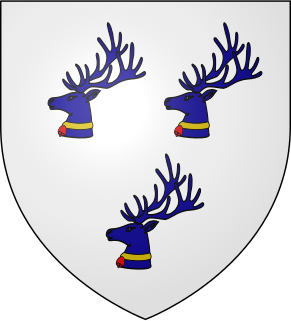
The Hannay Baronetcy, of Mochrum in the Stewardry of Kirkcudbright, was a title in the Baronetage of Nova Scotia. It was created on 31 March 1630 for Robert Hannay. The title became dormant on the death of the second Baronet in 1689. The title was claimed in 1783 by Samuel Hannay, the third Baronet. He sat as Member of Parliament for Camelford. His son, the fourth Baronet, was in the service of the Emperor of Austria. He was unmarried and the baronetcy again became dormant on his death in 1842.

Clan Pringle is a Lowland clan from the Scottish Borders.
Three baronetcies were given to three brothers, the first, fourth, and seventh of the seven sons of Sir James Steuart, knight, Lord Provost of Edinburgh, who died in 1681.

Sir Norman Murray Archibald MacGregor Pringle, 10th Baronet is a Scottish accountant. In 2016, he won a legal case establishing that he was the rightful heir to the Pringle baronetcy, using DNA evidence that proved his cousin, who had been accepted as the 9th Baronet in 1919, was not the biological son of the 8th Baronet.
